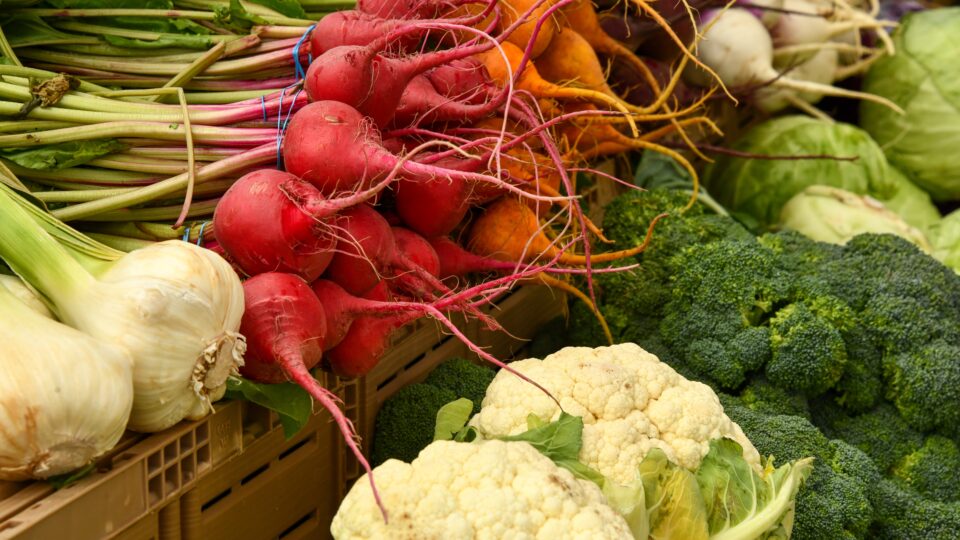Handling Hot Flashes Through Plant-Based Nutrition
Menopause can be a difficult and frustrating time for females, particularly if you are struggling with a flurry of frustrating hot flashes. Studies show that hot flashes impact up to 80% of women during menopause, though the presence of hot flashes can become noticeably present and bothersome when entering perimenopause.
According to the Mayo Clinic, a hot flash is the “sudden feeling of warmth in the upper body, which is usually most intense over the face, neck, and chest.” While experiencing this intense feeling of heat, your skin might take on a reddish tint similar to that rosy glow you notice when blushing. Unlike blushing, however, it certainly doesn’t feel rosy or what some may describe as a happy glow.
Instead, hot flashes can cause sweating and flushing, followed by a chill. If hot flashes are problematic at night, you may notice a disruption to the quality of your sleep. You may wake up more often due to temperature dysregulation leading to discomfort. Hot flashes may also cause you to feel like you are having heart palpitations through a more rapid heartbeat. You can also feel varying degrees of anxiety.
Some women choose to talk with a trusted healthcare provider to explore how to medically tackle hot flashes, particularly if they are interfering with one’s quality of life. According to Dr. Corinne Menn – medical director of Alloy Women’s Health based out of New York City, when estrogen levels plummet dramatically, estrogen receptors on neurons in the brain are disrupted. This disruption can impact the interplay between serotonin and dopamine, two important neurotransmitters that help to regulate your emotional state. For this reason, it isn’t uncommon to begin to feel like your body is completely out of balance both mentally and physically.
If you’d like to try to handle hot flashes on your own through some dietary changes, hopefully, this blog will help to provide some insight as to how you can tweak your current diet. According to this study published in Menopause: The Journal of The North American Menopause Society, dietary interventions promoting a plant-based diet led to a significant reduction in the frequency and severity of postmenopausal hot flashes in about 88% of the population studied.
Let’s take a look at 4 food groups or sources as a way to focus on plant-based nutrition, as inspired by this article from US News & World Report:
- Soy products. Although soy products often receive criticism and aren’t always viewed as favourable, soy products contain phytoestrogens. Phytoestrogens have the ability to mimic estrogen in humans. When the body senses an increase in estrogen, which may occur through the addition of soy products, proper temperature regulation is more likely to occur. Foods such as tofu, soy milk, and edamame contain phytoestrogens, thus you may want to play around with adding these foods to your diet more often.
- Whole grains. Although whole grains may get a bad rap, particularly if you are being mindful of your starch consumption, eating a balanced, high-fibre diet that also includes whole grains may be an option. Focusing on whole grains from rye, oats, spelt, and buckwheat may be preferable due to their lignan content. Although the word lignan sounds fancy, it simply describes the polyphenolic compounds found in plants that support healthy gut bacteria. It can also have a slight degree of estrogenic mimicking like phytoestrogens.
If fat loss is your goal, you may need to adjust your grain consumption according to how your body responds to foods that fall into this category. For more on this, please see “rule 3” from this blog post written by Dr. Jade.
- Healthy fats. Healthy fats are important to include as part of a balanced diet, and can make you feel fuller longer. Strategically adding healthy fats to your diet may be of critical importance to brain and heart health. Consider adding healthy fats such as olive oil, avocado, or nuts and seeds to provide your body with omega-3 fatty acids. Flaxseeds are also a wonderful source of healthy fat and fiber, and have been shown to have particular health benefits in menopause due to their phytonutrient and lignan content. This study indicates that when incorporated daily and in the right amount (approximately 4 tablespoons daily), hot flash frequency was reduced by 50% while intensity decreased by around 57%.
- Fruits and vegetables. Most Americans don’t eat nearly enough fruits and vegetables, so many individuals could benefit from this recommendation; however, this may be critically important for menopausal females suffering from hot flashes. Eating a wide variety of colourful fruits and vegetables helps to ensure that you get all the micronutrients your body requires. Incorporating a rainbow of colourful fresh fruits and vegetables provides your body with plenty of vitamin C, calcium, and fiber. Bright coloured fruits and vegetables also provide your body with plenty of antioxidants – compounds known to lower inflammation in the body, which supports overall hormonal health.
If fat loss is your goal and you are struggling with hot flashes, try adjusting your food choices according to the recommendations shared in this post, and then see how your body responds. If you aren’t certain about any of these recommendations, remember that one of Dr. Jade’s rules for hormonal fat loss is to “eat more of the right things more often”. The right foods that are best for you and your body are going to be unique to you based on your physiology, psychology, practical circumstances, and personal preferences. If fat loss isn’t your focus, you may notice that just a few tweaks help you to feel better as you move into this new phase of life.
Let us know if you find some relief from hot flashes by adjusting your nutrition plan with plant-based nutrition!
Photo by Shelley Pauls on Unsplash

